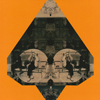 This piece for two pianos and a viola was one of the last pieces Luc Ferrari wrote and this recording documents its posthumous premiere along with a rehearsal performance. The two sides of this LP demonstrate that Ferrari was by no means running out of steam by the end of his life. The music as captivating as any of his other works for conventional instrumentation. Tense, violent and beautiful, Didascalies 2 is a potent reminder of Ferrari’s talent as a composer.
This piece for two pianos and a viola was one of the last pieces Luc Ferrari wrote and this recording documents its posthumous premiere along with a rehearsal performance. The two sides of this LP demonstrate that Ferrari was by no means running out of steam by the end of his life. The music as captivating as any of his other works for conventional instrumentation. Tense, violent and beautiful, Didascalies 2 is a potent reminder of Ferrari’s talent as a composer.
The first side of the LP features a rehearsal performance for Ferrari’s wife, Brunhild Meyer Ferrari, and covers a lot of ground in 18 minutes. Beginning with a dual piano pulse that sounds like a number of Morse code signals copulating, the piece slowly begins to fan out as the pianists (Jean-Philippe Collard-Neven and Claude Berset) incorporate clusters of notes around the central piano motif. "Didascalies 2" is at times ferocious; an atonal pounding erupts throughout the piece which is reminiscent of some of Ferrari’s earlier scores. When Vincent Royer’s viola appears towards the end of the piece it sounds like war has broken out; the viola is an oncoming bomber making a raid as the pianos replicate the explosions on the ground.
The world premiere performance of "Didascalies 2" takes up side B and the piece takes a different trajectory despite only a day between this and the aforementioned rehearsal performance. Emerging from the same one note pulse as described in Ferrari’s score, when Collard-Neven and Berset begin to develop the piece, it does not sound as jarring as in the rehearsal (not that jarring is a bad thing). Thunderous chords erupt late in the piece as lighter, melodic refrains pour from the pianos like rain. As the storm hits fully, the violence of "Didascalies 2" becomes apparent in a very different way to the other version of the piece; these recordings highlight the power of a good performer in interpreting and realising Ferrari’s works. The viola is far more intense here, Royer sounds like he is weathering the storm with the tenacity of someone desperate to push through the floods to safety.
Not only are the performances full of vigour and deftly played but they are immaculately recorded; the pianos sound like they are in the room with me. Although, the viola does sound a little flat compared to the two pianos but it is not clear whether this is because Royer is playing that way or because he was not recorded as astutely as the pianos. Yet this is only a small problem in an otherwise terrific release.
 
Read More


